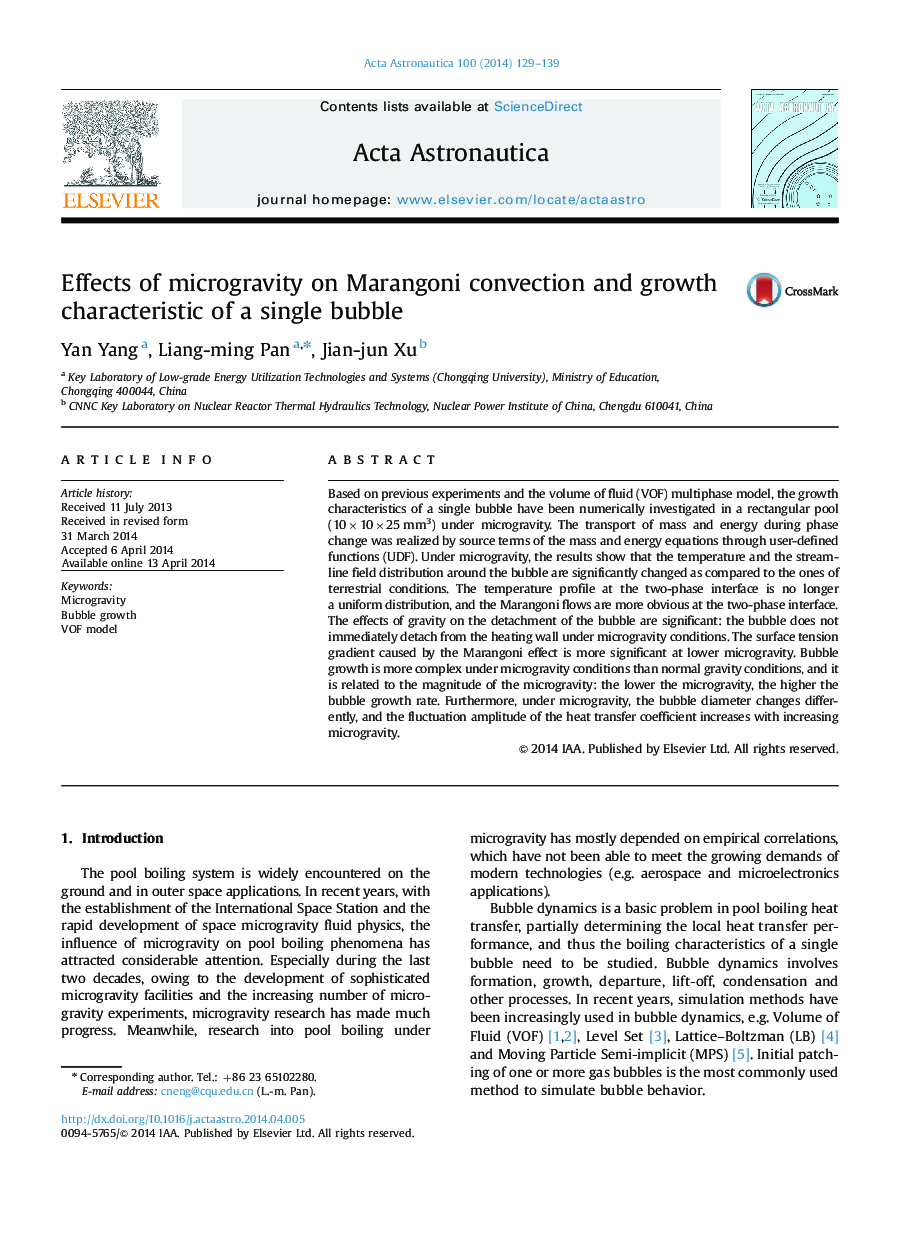| Article ID | Journal | Published Year | Pages | File Type |
|---|---|---|---|---|
| 1714545 | Acta Astronautica | 2014 | 11 Pages |
•Marangoni caused eddies play a significant role on bubble growth.•The bubble׳s shape at microgravity is different from that of the terrestrial condition.•The growth of the bubble is more complicated under microgravity than on ground.•The diameter increases as the microgravity decreased.
Based on previous experiments and the volume of fluid (VOF) multiphase model, the growth characteristics of a single bubble have been numerically investigated in a rectangular pool (10×10×25 mm3) under microgravity. The transport of mass and energy during phase change was realized by source terms of the mass and energy equations through user-defined functions (UDF). Under microgravity, the results show that the temperature and the streamline field distribution around the bubble are significantly changed as compared to the ones of terrestrial conditions. The temperature profile at the two-phase interface is no longer a uniform distribution, and the Marangoni flows are more obvious at the two-phase interface. The effects of gravity on the detachment of the bubble are significant: the bubble does not immediately detach from the heating wall under microgravity conditions. The surface tension gradient caused by the Marangoni effect is more significant at lower microgravity. Bubble growth is more complex under microgravity conditions than normal gravity conditions, and it is related to the magnitude of the microgravity: the lower the microgravity, the higher the bubble growth rate. Furthermore, under microgravity, the bubble diameter changes differently, and the fluctuation amplitude of the heat transfer coefficient increases with increasing microgravity.
